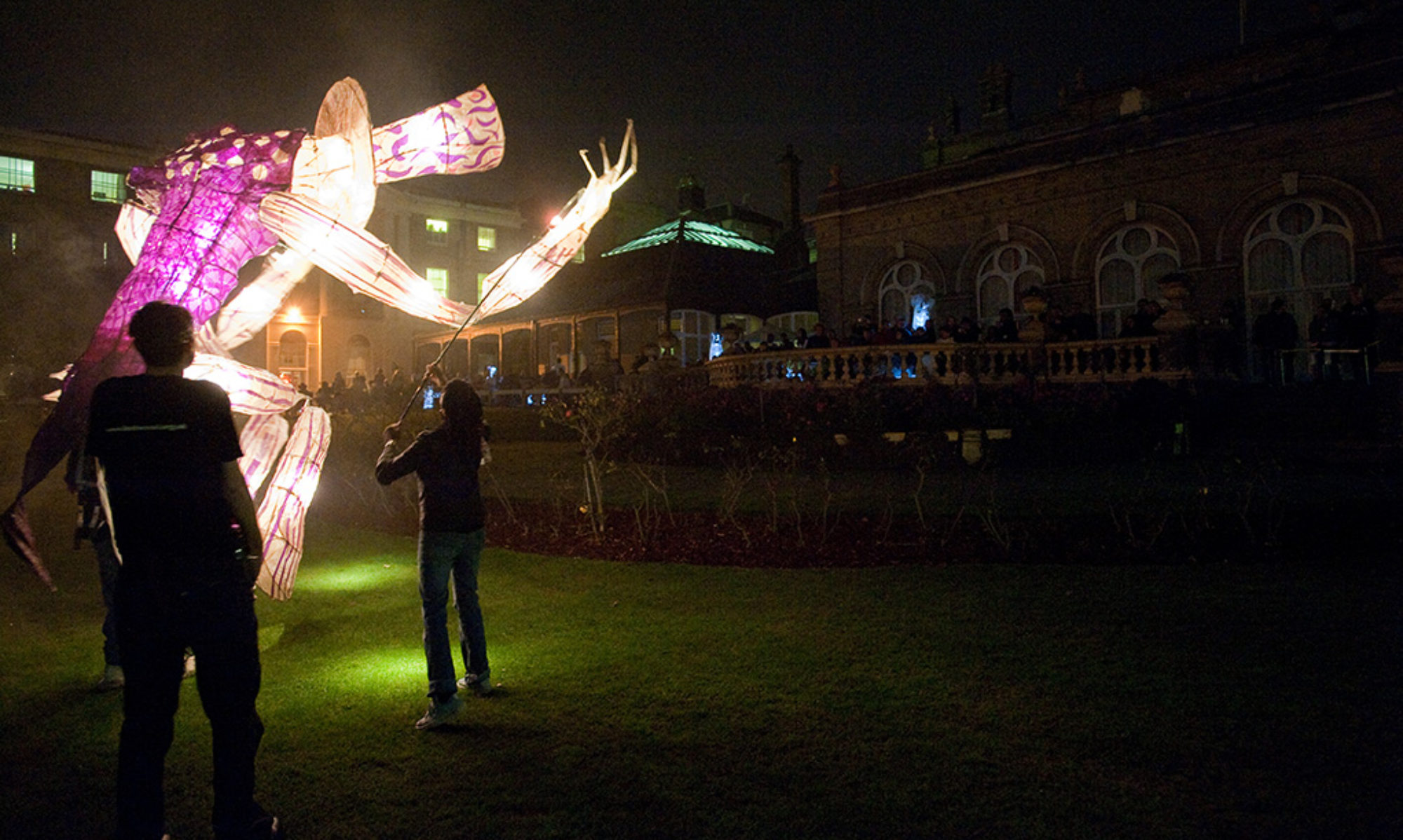Develop Your Creative Practice – An Arts Council funded project.
DYCP supports individuals who are cultural and creative practitioners and want to take time to focus on their creative development.
Simon’s DYCP project can be divided in to two, 1. Looking at Carnival from around the world and 2. Developing a Sustainable and recycling ethos through exploring making techniques.
Content
10. Developing performance for costume
9. Acestral Spirits
a. African Mask V1
b. African Wax Print Costume
c. African Mask V2
d. Tattered Costume
8. Greener Carnival/Greener Festivals
7. Homemade biodegradable paints
6. Making your own glue
5. Flying Birds from recycling plastic milk bottles
4. Junkanoo – Sunflower Carnival costume
3. Making masks from plastic milk bottles
2. Midnight Robber
- Introduction
10. Developing performance for costume
Many African societies have a rich tradition of masquerades, which are plays, ceremonies, or dances by masked performers. Masquerades provide entertainment, define social roles, and communicate religious meaning. The masks used in such performances may be treasured as works of art. They are also important symbols of ancestors, spirits, or even the history and culture of whole peoples.
- Movement for Red African King
2. Movement for Blue Krampus character
Movement for African King
Babatunde Babalola; A Nigerian Artist, teacher and Performer living in the UK, helped Simon to look at and to develop movement for costumes he made inspired by African culture. In our collaboration we looked at West Africa culture, Nigeria and African Mas.
Back to the Top
9. Ancestral Spirits & Masks
Interpreting the masks from the Chokwe (Zambia)
“In the context of ritual initiation, ancestral spirits may assume the form of masks to assist in trasmitting knowledge of this history down through the generations. These ancestral spirits are known as Makishi and may be seen as the masked dancers. They ‘rise up from the grave’ and are central to any study characterising the ritual art, history and ancient language of the Chokwe.
a. African Mask version 1
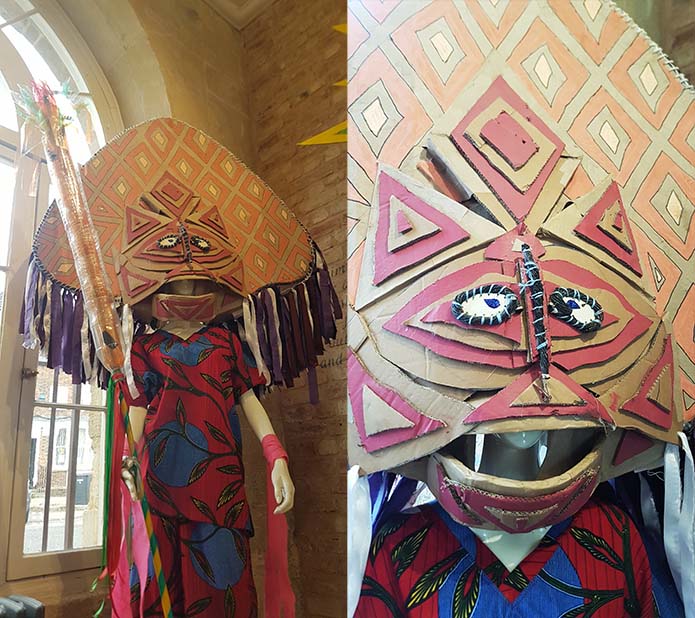

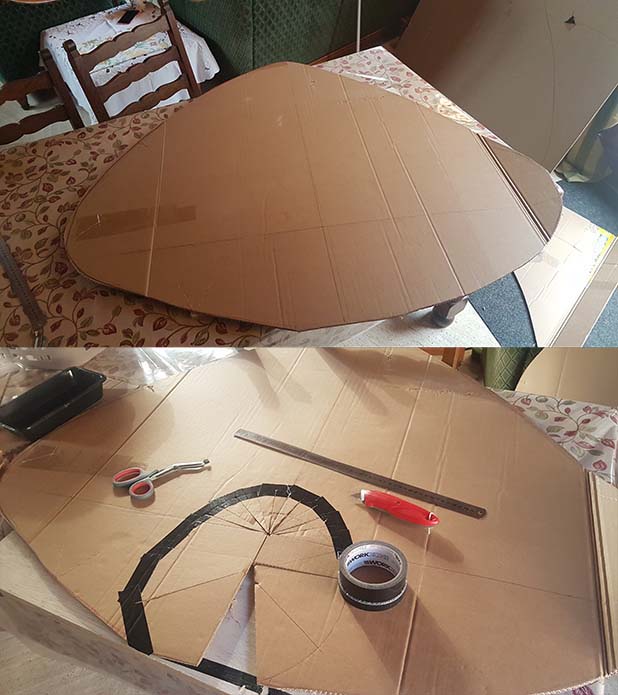
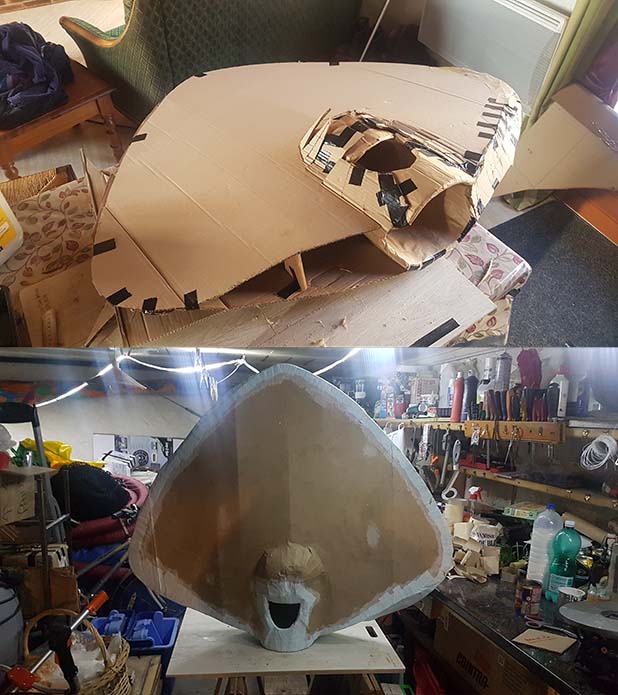

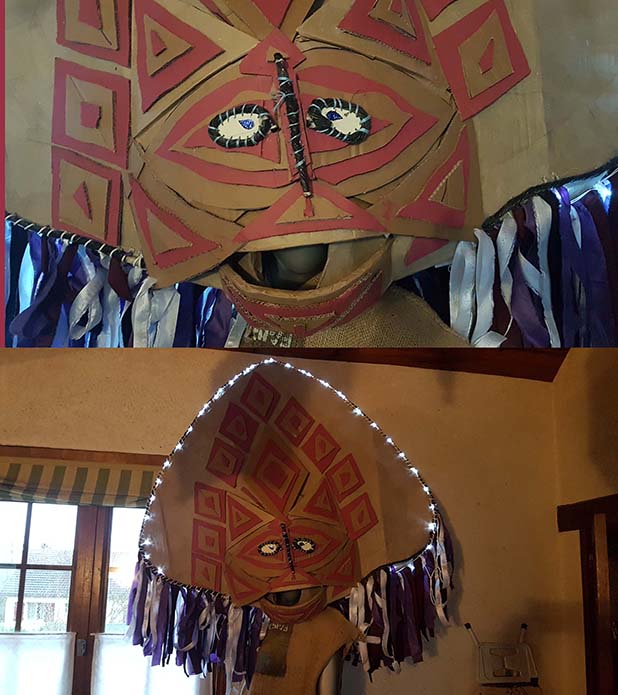

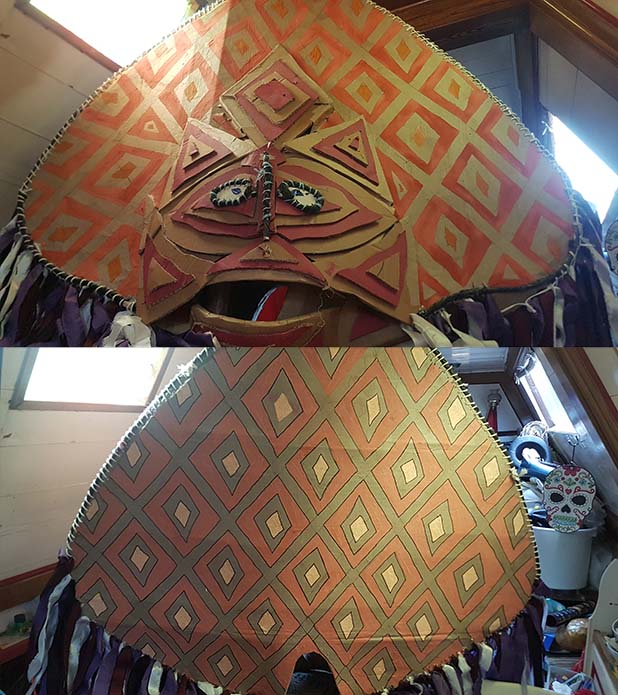
Back to the Top
b. African wax print Costume
This costume was based on a ‘New Look Sewing Pattern 6876’ – Men’s scrubs using a cotton material with an African Wax Print pattern.
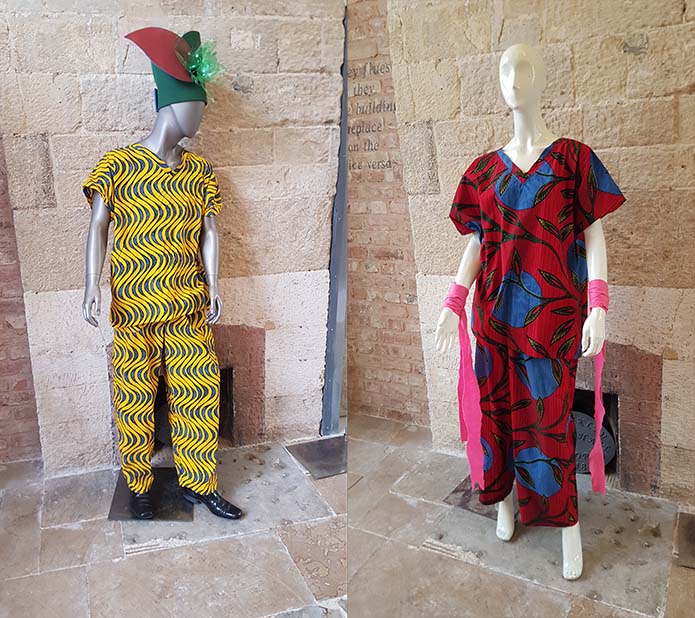
African wax prints, also known as Ankara and Dutch wax prints, are omnipresent and common materials for clothing in Africa, especially West Africa. They are industrially produced colourful cotton cloths with batik -inspired printing. One feature of these materials is the lack of difference in the colour intensity of the front and back sides. The wax fabric can be sorted into categories of quality due to the processes of manufacturing.
Normally, the fabrics are sold in lengths of 12 yards (11 m) as “full piece” or 6 yards (5.5 m) as “half piece”. The colors comply with local preferences of the customers. Typically, clothing for celebrations is made from this fabric.
c. African Mask version 2


The frame of the mask is made from split bamboo pole held together with gaffer tape and cable ties.
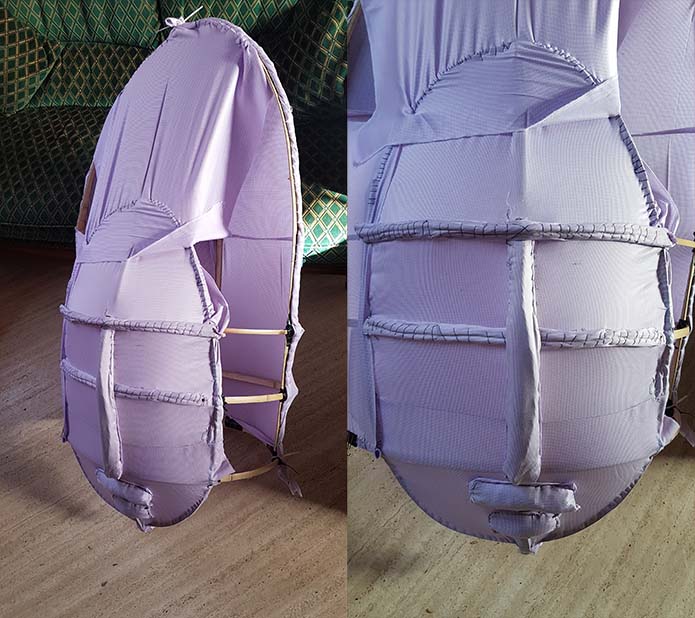
The frame is then covered with cotton material by sewing pieces together and sewing onto the frame. Facial features are also added.
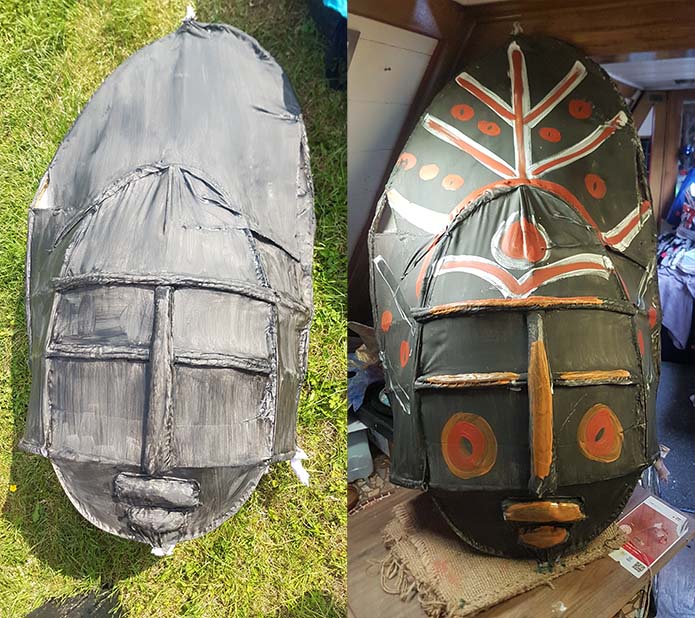
The mask is painted using a biodegradable paint which is in development, the black paint had vegetable oil added to give it a slight sheen to the surface.
Back to the Top
d. The Tattered Costume
Tattered costume, based on traditional African dance and masquerade (tattered & Raffia), European Morris Men Tattered costume and Montserrat carnival costume.
Made with the help of Bernard the mannequin the costume was made by recycling nettings, a thick cotton material a bit like calico and a felt material from Milton Keynes Scrape store/resource centre.


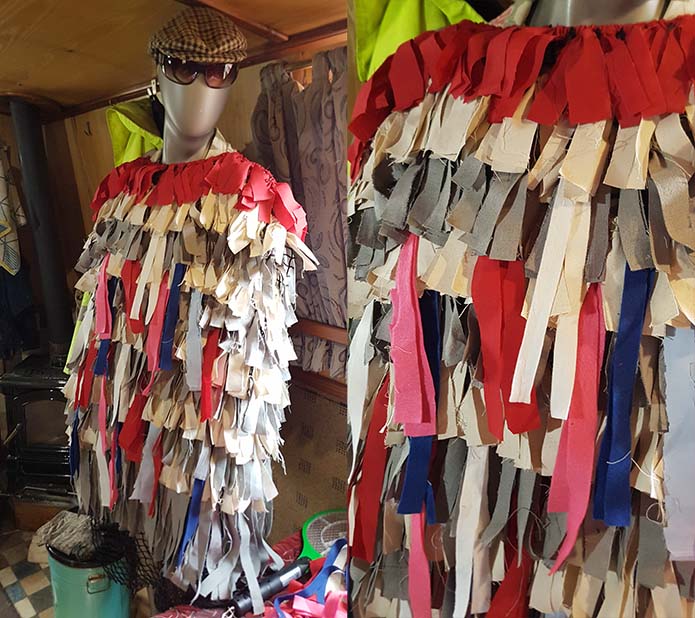
Back to the Top
8. Greener Carnival/Greener Festivals
Greener Festival Ltd will have an advisory and mentorship, including recommendations and CO2 conversions / comparisons of key materials.
Back to the Top
7. Homemade biodegradable paints
How to make Paint for carnival & art projects for school and community workshops.
The key to making these resources work for you is approaching them with creativity and openness and using them as tools to suit your own purposes. They do not require artistic expertise just a sense of fun and enthusiasm.
Making your own Paint
Make your own paint from a few inexpensive ingredients that is safe for adults and children of all ages. In its most basic form, paint consists of color (the pigment) and the glue in which the pigment is suspended (the binder).
Pigments. Safer alternatives to the toxic compounds and heavy metals used to color conventional paint include natural pigments derived from plants, insects, iron oxides and minerals. These are usually in powder form at artists’ supply stores. Using natural pigments from plants, fruits, clays and spices means the colour will be more pastel shades and can suffer from fading due to aging and sun light.
Binders. Binders keep paint glued to a surface. The acrylic and vinyl binders in commercial paints are derived from the byproducts of refining crude oil. The binders in natural paints rely instead on materials such as starch (from flour), casein (the protein in milk) and linseed oil (from pressed flax seeds).
The hardest part of making paint is obtaining bright colours, especially if you work in carnival, at present Simon uses a basic base starch recipe as his binder to which he adds coloured powered paints to, while still experimenting with plant and spice pigments to obtain deeper bright colours.
Powered paints dry with a powered surface but by adding to the base paint recipe below gives a stable tuff surface.
Many paints also contain ingredients that add texture and bulk (fillers), a thinner (the solvent) and other additives, such as biocides and drying catalysts.
Making a flour based paint
Materials
Water, Flour, salt, Clay and Wall filler
- Mix cold water and flour into a mixing bowl. Make the mixture with cold water. Pour 470 ml of water into a bowl. Combine it with about 450 g of flour and a similar amount of Salt, stirring until the mixture is smooth.
This mixture will create an inexpensive, non-toxic paint that can be used to give walls and other surfaces a matte finish.
Use milk instead of water if you require a more opaque and whiter finish
2. Boil 350 ml of water on the stove. Pour water into a large saucepan safe to be heated on a stove. Turn the heat on the stove up to high and wait for the water to boil.
3. Turn the heat down and stir the flour paste mixture into the boiling water. Lower the heat, stirring the mixture continually with a whisk or an electric mixer. The mixture should turn into a thick paste within 3 to 5 minutes. Once it becomes a paste, remove it from the heat.
Check the paste’s consistency to ensure that it is thick. If it seems runny, give it more cooking time.
4. Stir 470 ml of cold water into the paste. Use only cold water so the paste doesn’t thin out too much. Slowly pour it onto the paste, mixing the entire time. The water will thin the paste to a paint-like consistency as you stir.
Adding the water too quickly can thin the paste out more than you want.
5. Mix screened clay and powder filler in a separate bowl. In a mixing bowl, combine about 230 g of powered clay filler (I find Diatomaceous Earth ideal as it gives a smoother finish) with 110 g of a powder filler such as a DIY wall filler. These ingredients give the paint color and stability, preventing unsightly peeling and cracking on your walls.
Powerd clay can be ordered online or from hobby craft shops.
Diatomaceous Earth: Naturally occurring, made from the fossilized remains of aquatic organisms called diatoms. This food grade product is safe for human consumption.
Powder fillers are often available at home improvements stores and can also be purchased online.
6. Add the filler material to the paste. Slowly add the clay mixture to the paste, stirring it the entire time. Mix the ingredients together until the paste reaches the consistency you desire. You can then spread it over your paint surface with brushes like you would with any regular paint.
7. Pour drops of food coloring or pigments into the paint. Choose a paint color, then add until desired colour is achieved.
8. Use the paint and store the excess in a sealed container. Brush the paint over your painting surface, then wait for the paint to set. The paint will dry out in about 1 hour and cure within 24 hours. You may then wish to give your painting surface a second coating to make it look great.
Properly-stored paint should last 5 to 10 years.
Back to the Top
6. Making your own Glue
You can make your own glue from milk, just follow these simple steps.
Materials:
Skim or semi skimmed milk
White Vinegar
Paper towels
Rubber band
2 Cups
Baking soda
- Combine ½ cup skim milk with 2 tablespoons vinegar. Mix ingredients together well in a small bowl, give the mixture 2 minutes to sit. The protein in the milk will clump together into small white lumps of curd. The liquid that remains is called whey.
2. Make a strainer to strain the curds from the whey. Put a paper towel over the top of a cup with a large mouth. Push down the paper towel in the middle so that it caves in. Then take your rubber band and put it around the top of the cup and paper towel to hold your paper towel strainer in place.Choose a larger cup that you can pour the whole mixture of the curds and whey onto. Or pour the mixture onto the strainer, wait for it to strain and then pour on the rest.
3. Strain the curds from the whey. Carefully pour the curds and whey on top of the paper towel. The whey will drain into the cup while the curds will stay on the top of the paper towel.
Leave the curds and whey on the paper towel strainer for about 5 minutes to give it time to strain.
4. Place the curds left on the top of the paper towel between two dry paper towels. Scoop the curds off of the top of the strainer and onto two paper towels. Press down on the curds so that all of the liquid whey is squeezed out. You want to make sure that you get out all of the whey to make the glue.
5. Combine the curds with 2 teaspoons of water and 1 teaspoon baking soda. In another small bowl, add the curds, water, and baking soda. Stir the mixture together well. You will be able to hear the sound of bubbles popping if you listen closely because the reaction of the baking soda with the curds creates carbon dioxide.
If the mixture does not have the consistency of glue, add more water to the mixture by the teaspoon until it is the correct consistency.
6. Finished.
This glue works well on porous surfaces such as paper and cardboard
Back to the Top
5. Flying Birds from recycling plastic milk bottles
An installation of flying milk bottles – working with plastic got Simon thinking the wrongs and rights of using plastic in creativity.
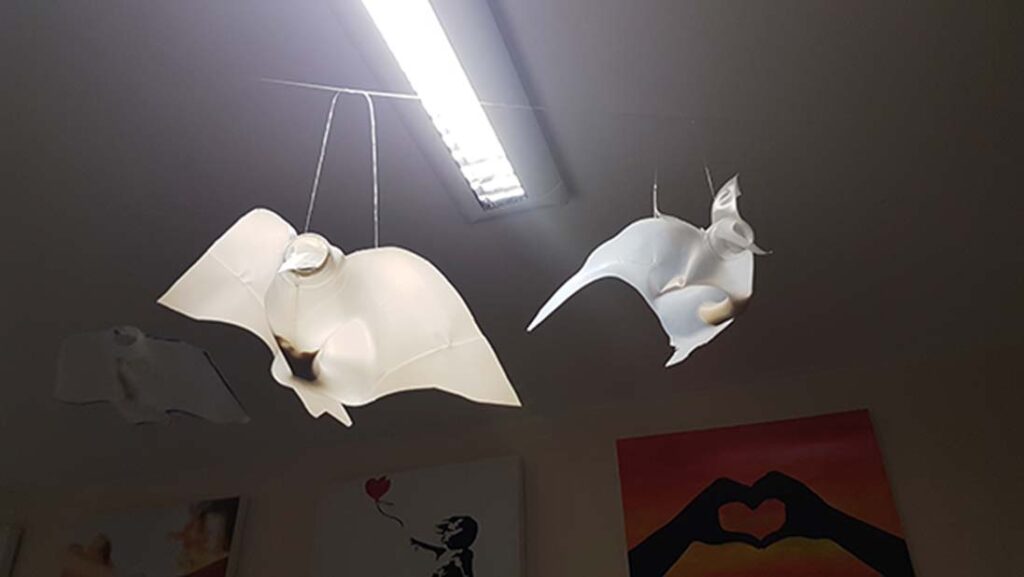

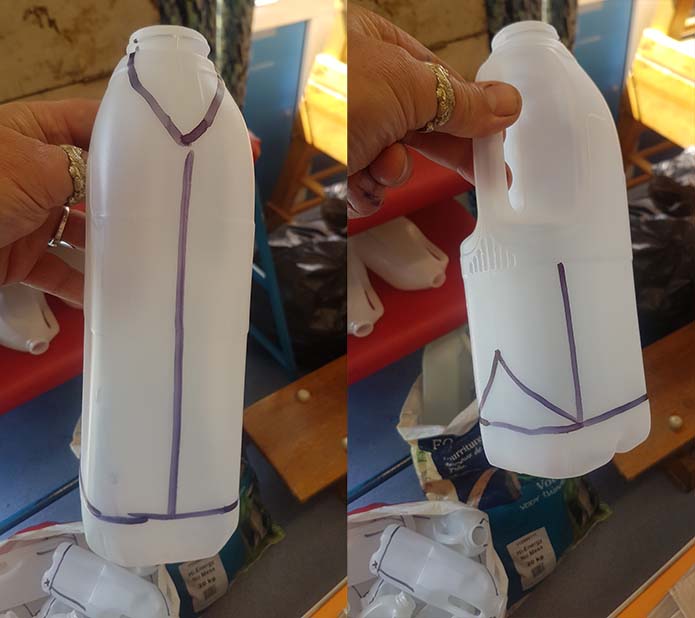
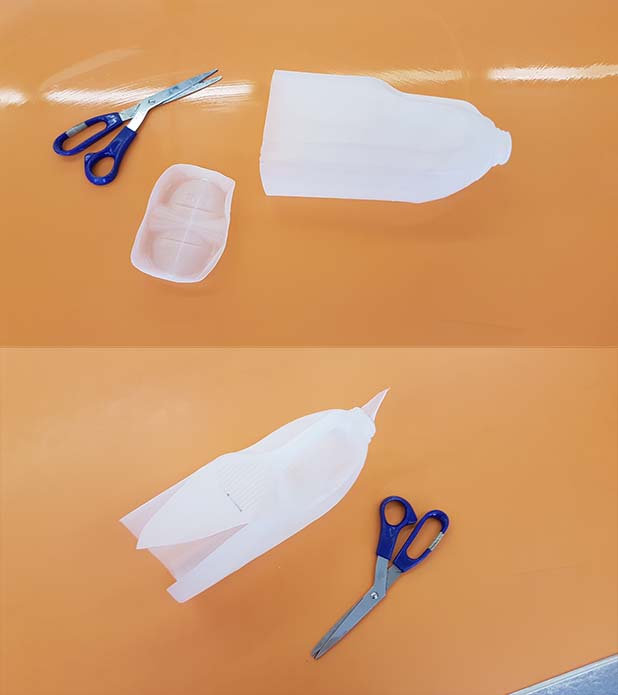
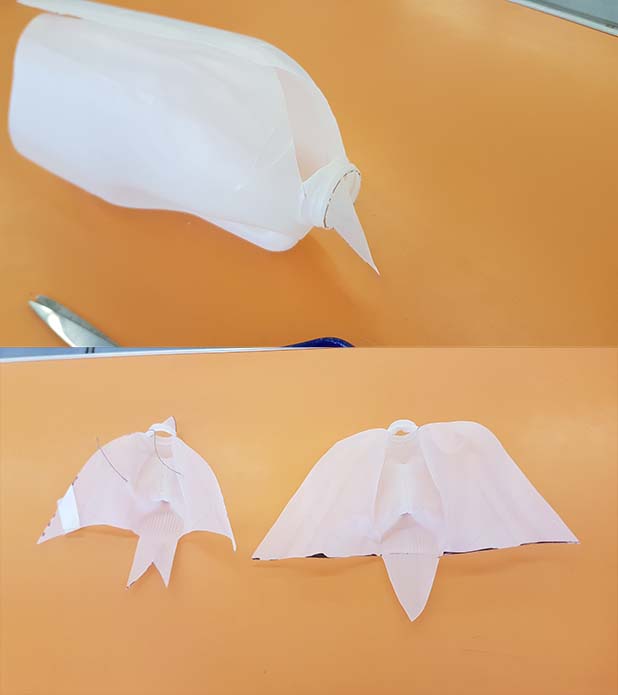

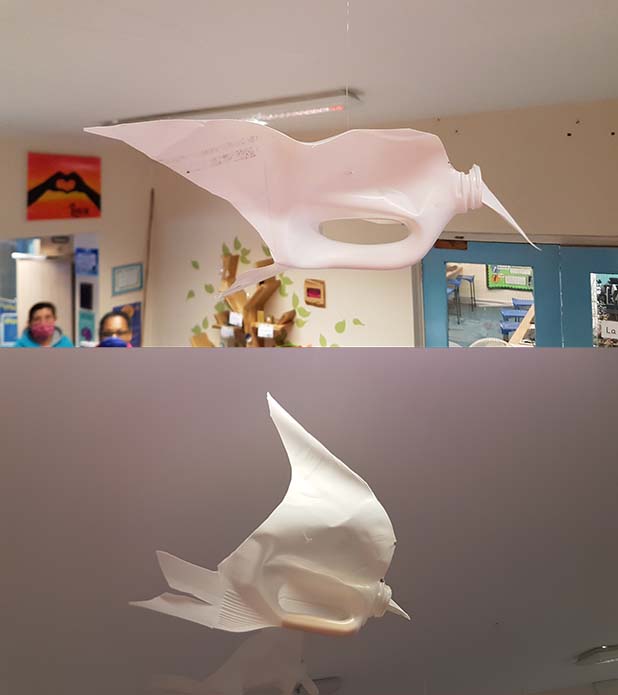
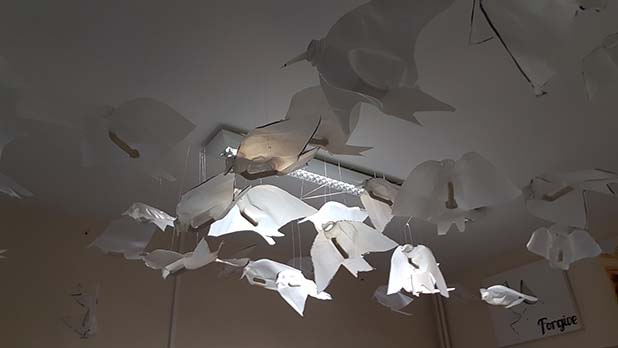
Back to the Top
4. Junkanoo – Sunflower costume
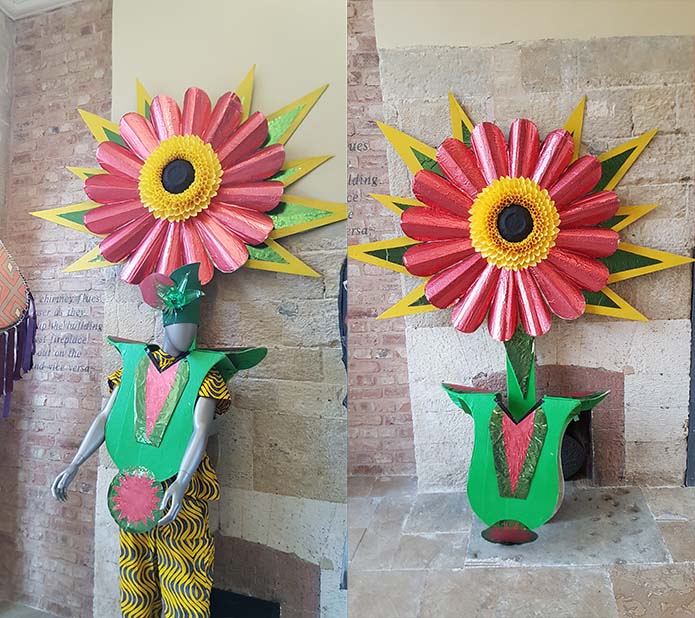
Junkanoo is a street parade with music, dance, and costumes of mixed African origin in many islands across the English speaking Caribbean every Boxing Day (26 December) and New Year’s Day (1 January). These cultural parades are predominantly showcased in the Bahamas where the music is also mainstreamed.
The expression of Junkanoo is shown off in the costumes. The first set of costumes were masks made from flour paste and colorful crepe paper over the body. The costumes have now evolved to ecstatic works of art made from crepe paper that is carefully glued to fabric, wood or cardboard. The outfits consist of dresses or skirts with a show-stopping headpiece to tie the whole outfit together.
The festival may have originated several centuries ago, when enslaved descendants of Africans on plantations in The Bahamas celebrated holidays granted around Christmas time with dance, music, and costumes. After emancipation the tradition continued and junkanoo evolved from simple origins to a formal, organised parade with intricate costumes, themed music and official prizes within various categories.
The Sunflower

What does a sunflower symbolise? Sunflowers symbolise loyalty, adoration thanks to the myth of Clytie and Apollo. And, because of their association with the sun, sunflowers are well-known for being a happy flower.
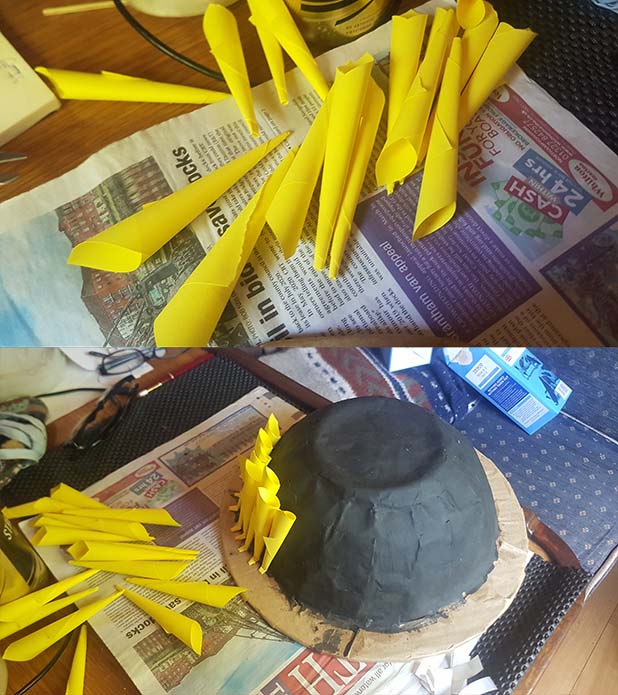
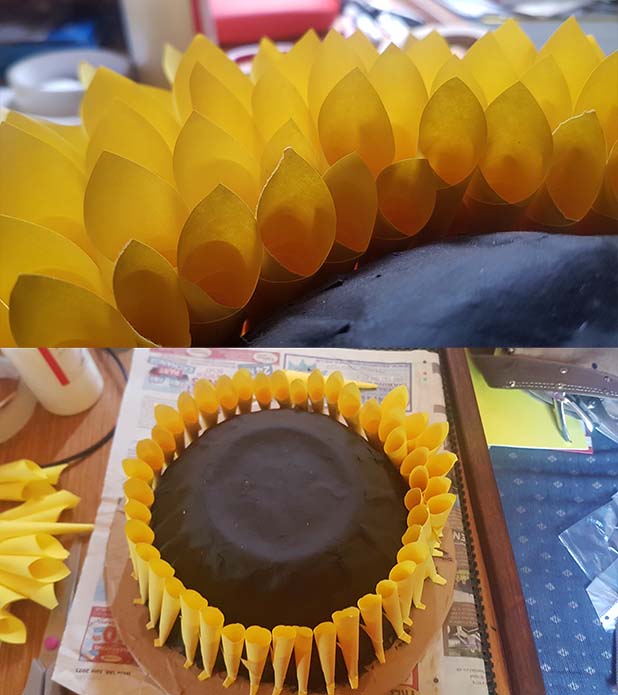
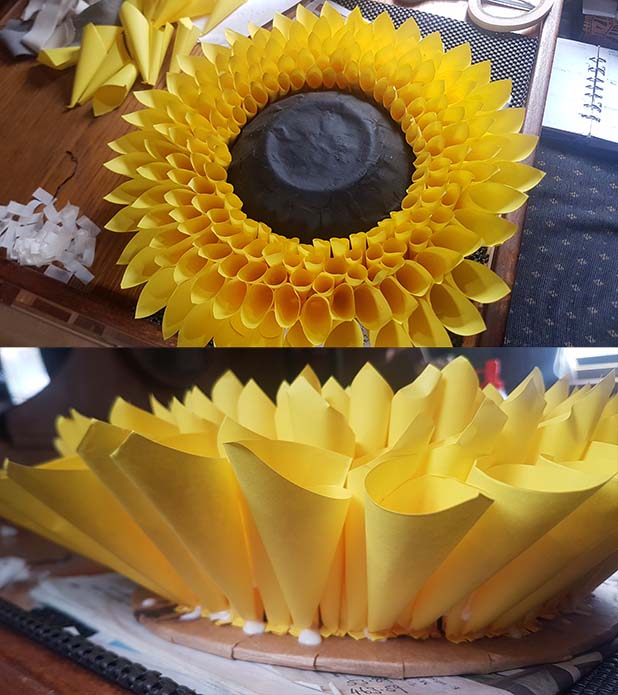
Making a Sunflower Back-pack
This sunflower costume is mostly made from cardboard and papier Mache. The challenge was to make a backpack style costume with height developing construction techniques using limited materials.
Cardboard is a versatile and sustainable material, usually a single use material used for packaging, by recycling large cardboard boxes collected from large shops and industrial estates we give new life to paper products, if we reduce the amount of contamination applied (paints, tapes and plastic foil decoration) as much as possible the finished artworks can be recycled conventionally when not required anymore.
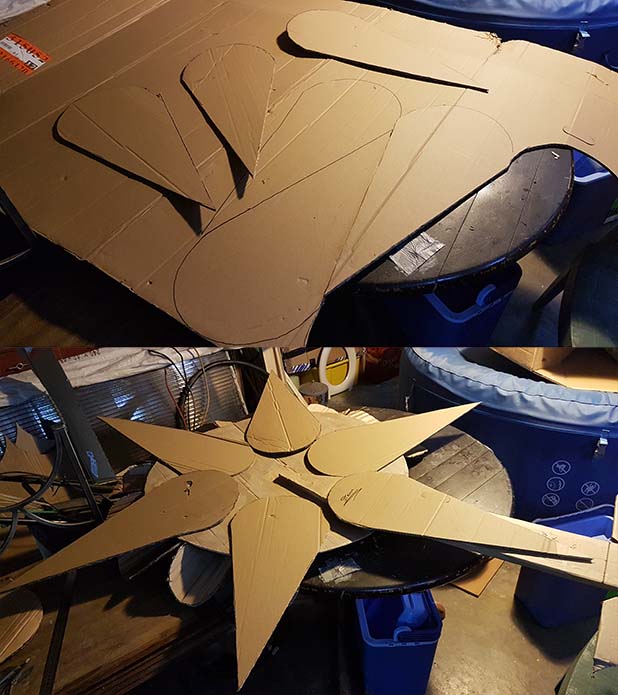
#Using a little bit of maths, science and a lot of creativity, cardboard has a lot of potential. I love working with cardboard as an environmentally friendly material, creating masks, carnival backpacks, large puppet heads, headdresses or large paper boats to float on water, you can even make this material water resistant by using biodegradable glues and paints for the British weather. Making carnival and community workshops greener.
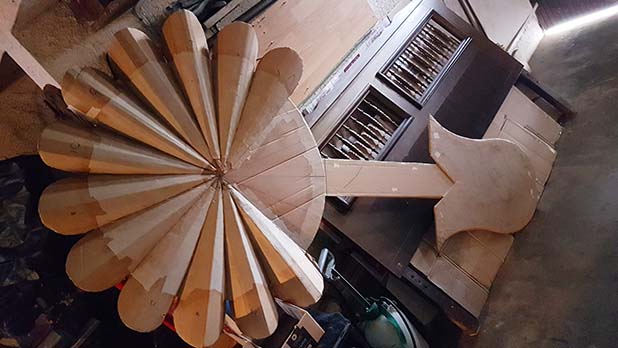
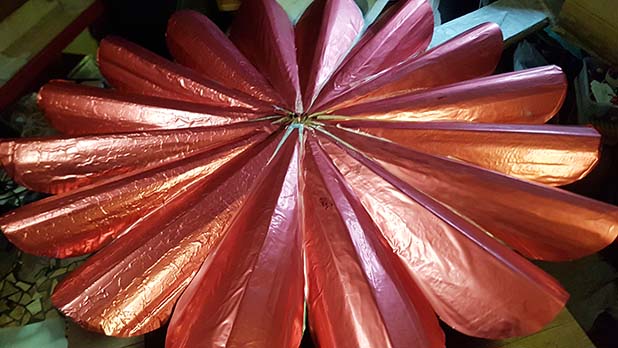
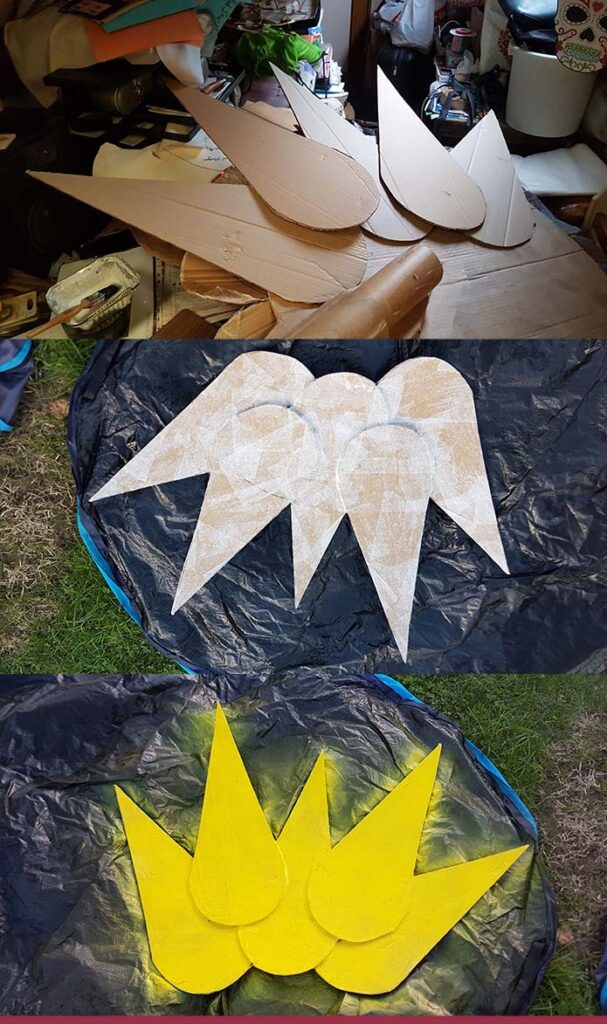
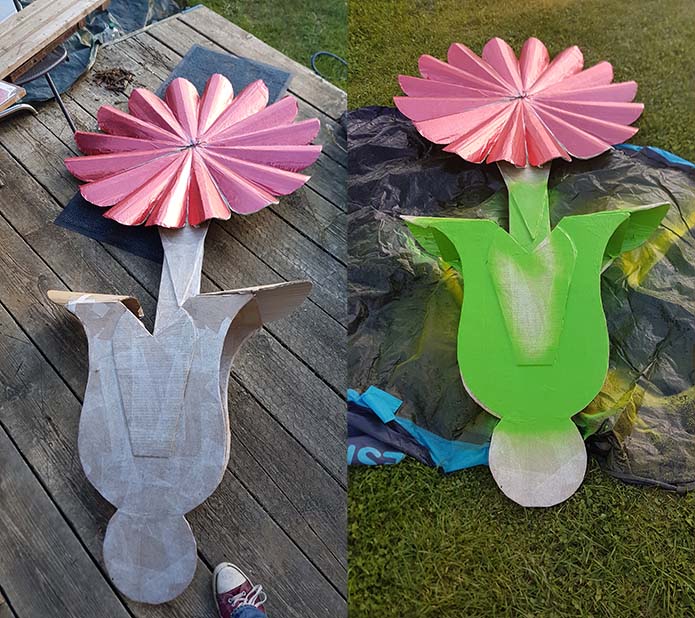


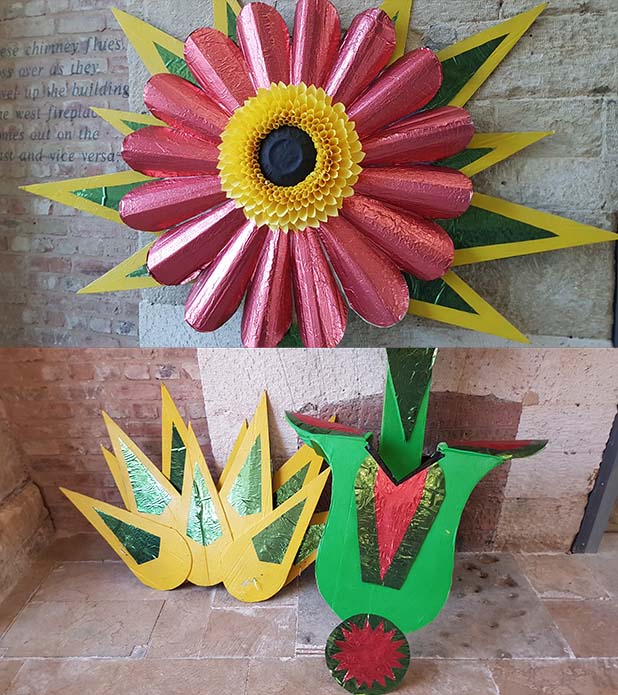
Back to the Top
3. Making masks from plastic milk bottles
A mask is an object normally worn on the face, typically for protection, disguise, performance, or entertainment. Masks have been used since antiquity for both ceremonial and practical purposes, as well as in the performing arts and for entertainment.
Here Simon is making African inspired masks by recycling single use plastic milk bottles



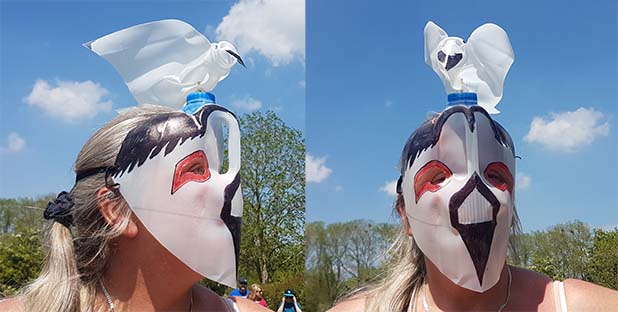
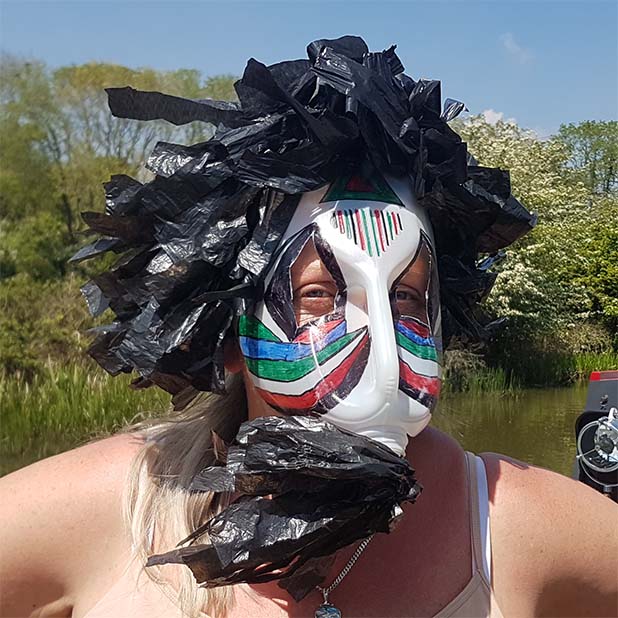



Back to the Top
2. The Midnight Robber
A Traditional Caribbean Carnival Character
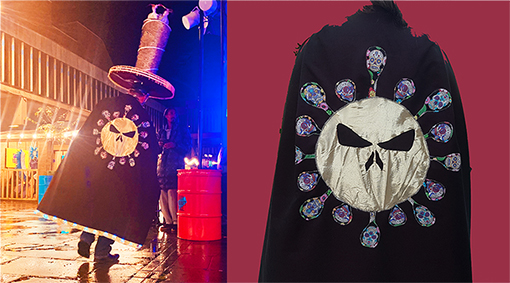
This is Simon’s interpretation of the Midnight Robber under lockdown, it was commissioned by Northampton Carnival and EMCCAN (East Midlands Caribbean Carnival Arts Network) as part of their ‘Innovating Mas’ project supporting carnival artists from Nottingham, Derby, Leicester and Northampton Carnivals. It was a combination of this commission and work produced for ‘Carnival Network South’ for their conference ‘Towards a Greener Carnival’ that inspired Simon to update his knowledge and skills for the new world to research Masquerade past, present and Greener, develop street art for exhibition, performance, websites and social media. During lockdown Simon reflected on his creative needs and discovered that he has mislaid some skills: to create art of his choice, progress a theme through a series of developing ideas & techniques. By going back to basics looking at themes of African masks & Traditional carnival characters to create artworks, steps will be taken to rejuvenate and stimulate the creative process.
The Midnight Robber is one of the most beloved colourful traditional carnival characters. He is identified by his extravagant costumes and distinctive speech, called “Robber Talk” which has a boastful, mocking style. His costume is inspired by cowboy traditions, sporting an oversized hat on which a Skulls or a coffin is often superimposed, a flowing black cape painted with a skull and cross bones; black shirt and pantaloons and shoes or boots. He blows a whistle and carries a gun, sword or dagger and a wooden money box in the shape of a coffin.

An example of a Midnight Robber Speech
‘Away down from the heightless region of the phantom graveyard came I,
The most impregnable, unconquerable and most adorable Prince of Crime.
Where I live the sun never shine,
The rain never fall,
Grass never grow,
And even the wind refuse to blow.
For I’ll bite a piece of the moon and shorten the season.
My tongue is Death and my voice is THUNDER
Now the voice of THUNDER has now been founded onto me
Sounds like SWEET music in my ear
Murder on my mind
And even the spirit of the great mystical power of the earth I’ve already crossed and slain
With any Mocking Pretender like you that come my way!’
Back to the Top
- Introduction
About Simon
Simon Tipping a self-employed artist based in Claydon, Banbury. Fine arts trained, established himself in Milton Keynes in 1985 after completing his Degree in Ceramic’s at Bristol, becoming a Ceramic sculptor & involving himself in the arts & community of the MK.
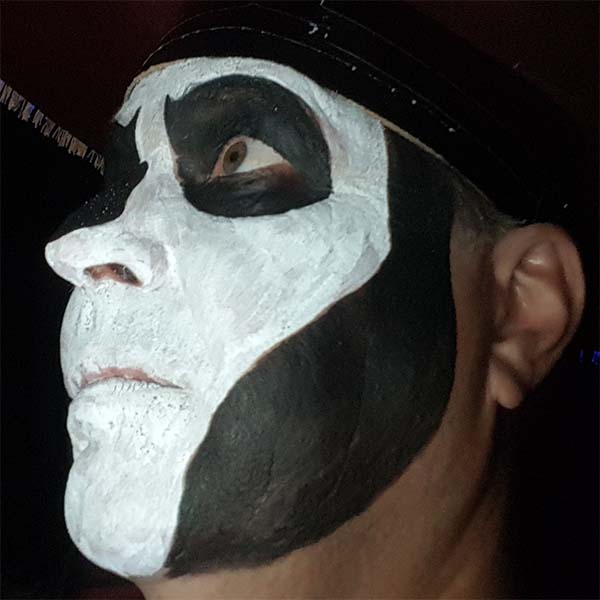
In 2017 Simon establish Route Canal Arts, a not for profit arts company who believe in creative partnerships with a commitment to working with people through the arts to make a real difference to their lives. Route Canal Arts strive to deliver high quality art projects using sustainable and recycled resources through creative thinking to engage and inspire the people they work with.
Over the past 35 years Simon has worked regularly and extensively across schools and communities in Buckinghamshire, Bedfordshire, Hertfordshire, London, Oxfordshire, Northamptonshire, and Somerset whether that is as a freelance artist, in partnership with other fellow artists and arts organisations or as Route Canal Arts.
In 1992 Simon became a member of the ‘Silbury group Artists’ a collaborative group of nationally known artists based at Westbury Farm Studios, Milton Keynes. This artist led group had an impressive record of exhibitions, international exchanges, residencies, educational & community projects providing artistic links with local & national organisations. From 1998 to 2004 Simon was the Chairman supporting a program of International Artist Symposiums and artists exchanges held at Westbury Farm studios as well as curating the 10th Anniversary Exhibition at The Milton Keynes Gallery in 2001 and ‘Memoirs of my travels’ the group’s first international exhibition, Kaunas, Lithuania.
In 2000 Simon embarked on a carnival training program with Interaction:MK, breaking away with four colleagues to form Festive Road CIC (creative Director/2005-16) after a trip to the Trinidad carnival. The company created & designed giant puppets, processional sculptures, costumes, masks, Mas bands, street events, parades & community projects using recycled materials. Simon has attended Viareggio and Venice carnivals, participated at the Rio carnival with Paul Davies ‘Embaixadores da Alegria’, Bei Jing, China with Ali Pretty’s kinetika and her Imagination Our Nation project, show cased the work of Festive Road at the Thames festival nighttime carnival, MK International arts festival and responsible for ‘Walking with Giants’ for Central Milton Keynes 2012-15.
He has a wealth of experience engaging the young and old in creative learning, making amazing art accessible and participatory using recycled materials.
About this project
Committed to the carnival arts Simon has worked hard to achieve a level of skill and knowledge that is matched by a clear commitment to working with people and passing on the skills. Simon wants to develop his knowledge & skills, to investigate in greater depth his own creative themes around traditional carnival costume, European culture, and African masks.
- Costumes made from cardboard & recycled materials, experiment with different methods of constructing from cardboard using maths & Science to produce strong, durable, colourful and weather resistant structures.
- Create tradition and updated Masquerade costumes by recycling clothing and fabric materials from charity shops or resource centres.
- Making masks using moulds and papier Mache. Making a negative mould – sculpt a positive image in clay, then cast image in plaster to form your negative mould from which you can make multiples from, this method produces a details and crisp mask. Use found positive items such as masks, cow horns, the human face to over lay the paper Mache, this form of making give you a base shape to build off. Papier-mâché is a composite material consisting of paper pieces or pulp, sometimes reinforced with textiles, bound with an adhesive, such as glue, starch, or wallpaper paste.
- Recycling single use plastic bottles. Using one sort of plastic at a time on a project & only that plastic such as HDPE – High density Polyethylene (e.g., Detergents or milk bottles) they are light weight, durable and have longevity, they are also easy to manipulate, cut with scissors, colour with permanent markers and can be put straight into the recycling bin when not required anymore.
- There is also an element of new technology & lights for costume so that it can be worn or displayed day or night.
- Refine, research and develop making glues and paints using ingredients from the kitchen cupboard focusing on developing colour.
- Ongoing research into traditional carnival costumes from the Caribbean, Africa & Europe, learn their history, connections and how they are made. With this knowledge Simon develops his own interpretations to create high quality carnival costume.
Inspired by:
- Trinidad traditional carnival characters (Midnight Robbers, Devils, The Book Man, Jab Jabs, Dragons, Moko Jumbies etc)
- The Caribbean Island of Montserrat and its carnival traditions
- Masquerade traditions from the coast of West Africa
- The Bahamas Junkanoo
- Olinda & Rio Carnival, Brazil
- Venice Carnival, Italy
- Viareggio Carnival, Italy
- Jack in the Green, Hastings
- Luton Carnival
- Aurillac International Street Festival
- Milton Keynes International Festival
A lifelong ethos for Simon is to explore and develop a sustainable way of using materials to create carnival costume, masks, headdresses, and large processional sculptures. Mainly looking at the possibilities of eliminating or reducing the number of petroleum-based materials used in the carnival sector but not necessarily excluding plastic from his making practice. Simon is taking a practical look at developing methods in creativity using sustainable and biodegradable materials: Bamboo, Cardboard, Cotton, natural dyes, Paper, Rubber, Wheat, Wood. As well as recycling single use plastic to extend its life on a long term basis and educating the public about it’s life cycle.
Back to the Top
